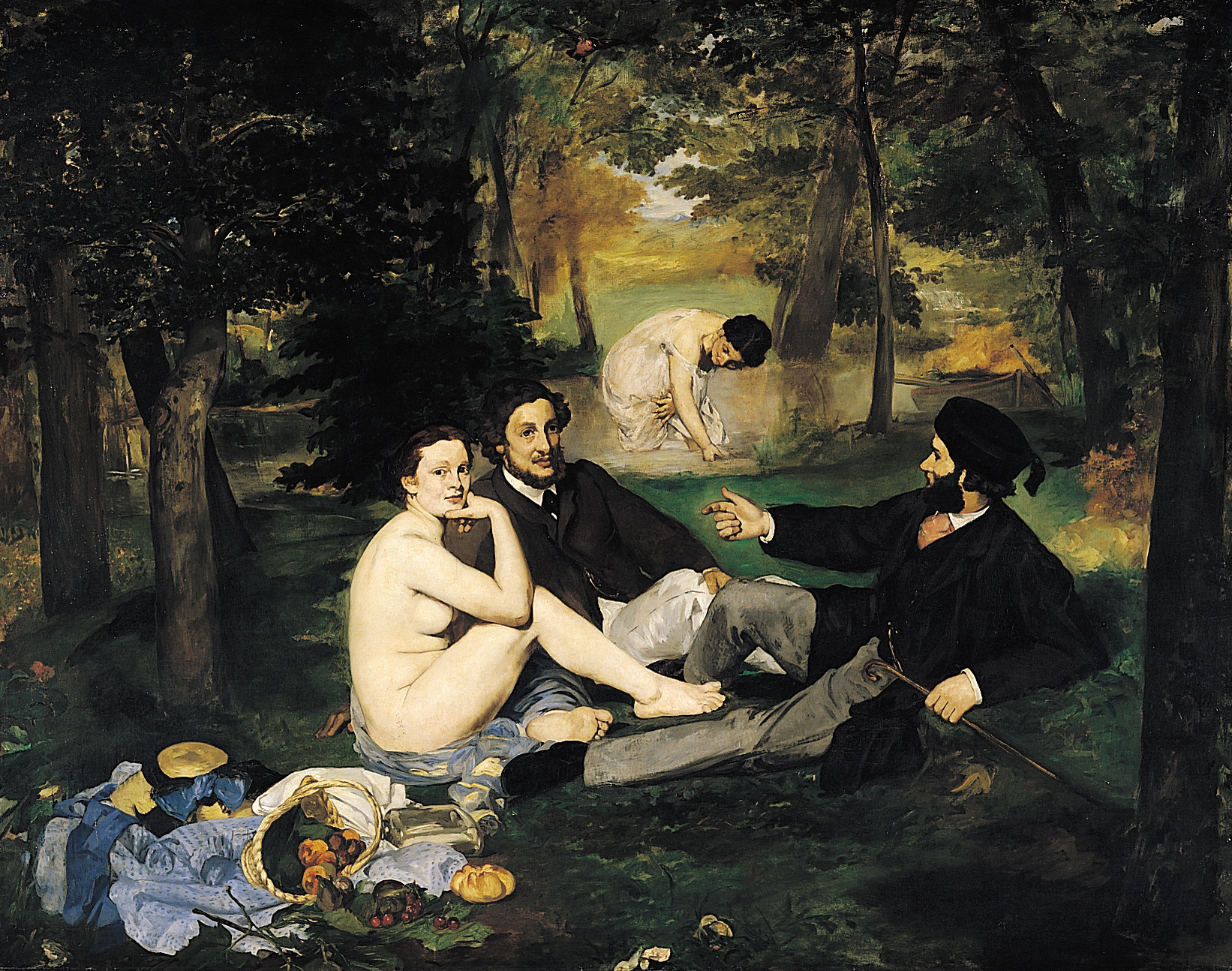Art as the Erotic - Le Déjeuner Sur l'Herbe
8:00 AMArt as the Erotic
How We Observe Sex in Art
Curated by Chase Coble
Edouard Manet’s Dejeuner sur l'herbe was immediately met with crticism by the Salon, and would in fact become the focal point of the heavily criticized Salon des Refuses in 1863. But why was this painting met with such tribulation and given the moniker “taboo”? It was sexually confrontational.Manet ascribed the painting’s composition to a now lost tapestry by the master Raphael – two men gathered next to a naked Venus. Yet, we aren’t observing a Venus, which was Manet’s exquisite subversion. We find our subversion in the nakedness of the model at the left foreground, mind the distinction between naked and nude. She is a woman, one that you could find walking the streets in Paris, and she is looking directly at us. It is her confrontational gaze that offers us a matter-of-fact description about her sexual desire. And, it begs the question, not what, but who is for lunch?
Manet places our model’s clothes also at the left foreground, and accompanies them with the classical allusions to sexuality - ripe fruit, broken bread, and copious amounts wine – a lunch party indeed. Manet taunts the Salon’s long held traditions by deconstructing all formality, placing sex and desire in open view. His brushwork makes us question what intangible line actually gives us the ability to think sexually, and why there should even be one.
Our naked model is the only subject looking at the viewer, and through this Manet has rejected any illusions towards her sexual readiness. This painting is sex, and we as the viewer are forced to appreciate that.
Our naked model is the only subject looking at the viewer, and through this Manet has rejected any illusions towards her sexual readiness. This painting is sex, and we as the viewer are forced to appreciate that.

0 comments